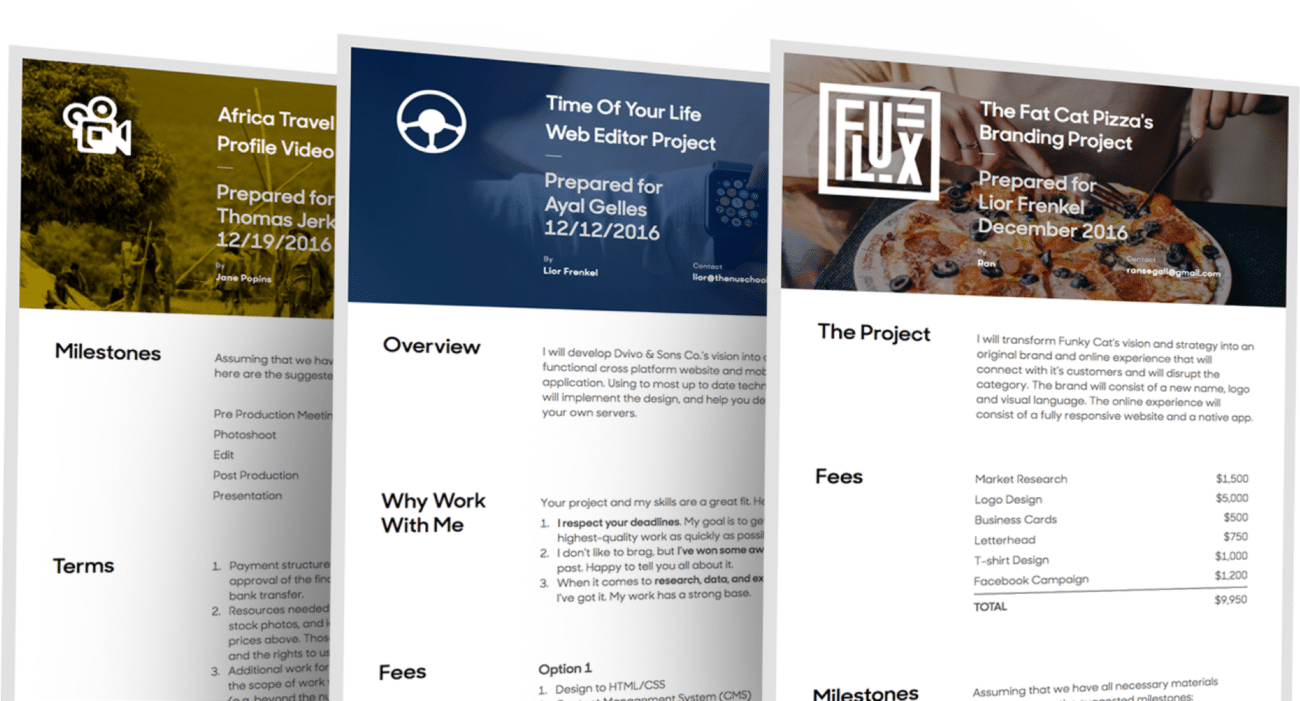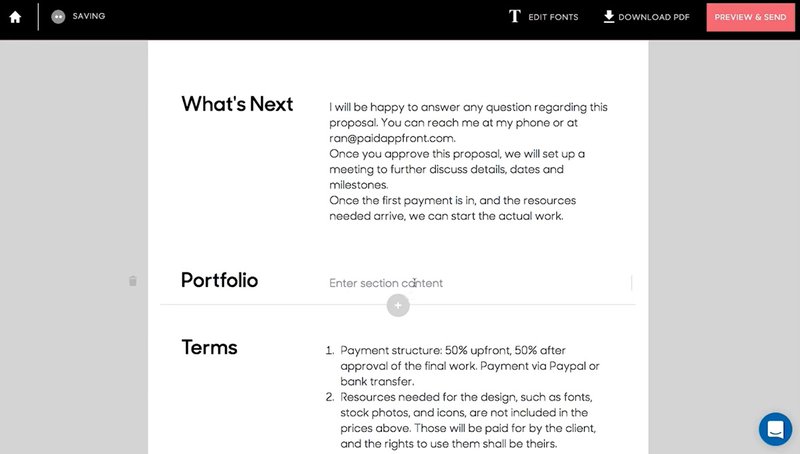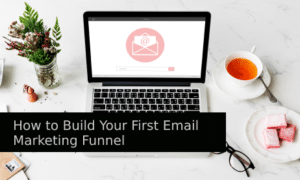Your business has a great product, and you’re offering it at a great price. Customers want your service, and they’re expecting a proposal from you.
Sending proposals through email can be effective for customer acquisition for small to medium businesses (SMBs).
Email proposals can be ineffective and underperform if you don’t do them right. Although there’s absolutely no perfect formula, undermining the best practices can result in low click-through rates, conversion rates, and even delivery rates, thereby leading to an abysmal ROI. All these despite sending a well-formatted email proposal.
If your email proposals are failing, it’s time you pinpoint what you’re doing wrong and avoid them.
Here are five reasons why proposals written on email can fail and how can you fix them:

1. Poorly Formatted And Packaged
The Content Marketing Institute reported that marketers are heavily dependent on emails as a source for acquiring potential leads. If your emails lack a properly structured style or structure, they will not stand out from the crowd. Your proposal isn’t the only one that’s being sent to clients, hence why it’s essential to differentiate yourselves.
Additionally, if your proposal is ridden with technical jargon or buzzwords, there is a chance many of your prospects will not understand your offering.
Unfortunately, proposals written on emails can also be challenging to read and structure due to email limitations.
How To Fix This:
-
- Formatting: Proposals on email can be formatted, with bolded headers, smaller paragraphs, some pictures, and colors where necessary.
-
- Trimming and packaging:Trim and package your selling points to the basics by using short sentences and easy-to-comprehend words.
-
- Write a story:Think of your proposal as a story. Good stories have a strong beginning, middle, and end.
- Package your proposal differently:Consider not writing down your proposal within an email at all, but instead attach your proposal in a separate document. Tools such as Prospero help you build professional proposals faster and impress your clients; this allows you to format, package, and provide a solid narrative to your proposals.

2. Missing Testimonials And Client References
People trust testimonials and references from previous and existing clients; this brings social proof to the product or service you are offering. People want to learn about your business, what you’re doing from other people, and how it helped them. Testimonials and client references build credibility and trust.
How To Fix This:
-
- Add in testimonials and references: Don’t send an email proposal without testimonials or client references. Spice up your email by including a few testimonials to highlight your success. Furthermore, add the contact information of some of your previous and existing clients, so your prospects can contact them and verify it by themselves.
- Package your testimonials with images and graphics: This is again much more easily done with added visuals and buzz on an external format, such as in a PDF or PPTX file.
3. No Clear CTA Or Call-To-Action
You’ve emailed the ‘perfect proposal. Your CTA or call-to-action button is crystal clear, and you’re confident that your recipients will click it. A few days later, you check your stats and discover that even though 80% of your leads opened the email, your click-through rate (CTR) is abysmal. Click-through rate refers to the total number of recipients who are interested in the content in your email.
One of the primary reasons for having a low CTR is that your recipients don’t find your emails engaging or don’t tell them what they should do after going through the email.
See, you can’t send email proposals to people in any email campaign and expect them to know what they should be doing.
How To Fix This:
-
- Structure your CTAs clearly: Your emails should be convincing and compel the recipient to take some form of action, such as sign up for your weekly newsletters or press releases, join a webinar, purchase something from your shop, download an eBook, listen to a podcast, or whatever may that be. If your email doesn’t have a clear call-to-action — you can’t expect your business to grow.
-
- A/B test your CTAS to find the best one: In email marketing, the creative use of titles, formats, and emojis can actually make a noticeable difference. A/B test your CTAs in emails to find the best-performing one.
-
- Use a SaaS Tool: If you’re looking for a tool for creating great, high converting email proposals with ease, but at a fraction of the cost, and save hours of work in the process—Prospero has you covered! Prospero integrates to third-party platforms with just a few clicks.
- Craft your CTA with a compelling benefit: Your call-to-action be exciting and relevant to the content of your proposal. It must tease your prospect to take action, thus increasing conversion. Plus, only telling them what they must do won’t suffice; you should also show them how to do it. And ensure that it is easily discoverable and stands out from the rest of the content.
Top Tip: Be sure to only send emails to prospects with working email addresses to improve your CTA. If you keep sending emails to email addresses that are no longer used or inactive, you’ll expect low open rates. So to avoid that you should run email validation. Sending emails to unsolicited people for a long time can get you reported for sending spammy emails, which will damage your email campaigns, exacerbating your email engagement woes.
Ensure your email list consists of active and correct email addresses before sending your email proposals. You can use email validation tools (like ZeroBounce) to make the process more efficient and smooth.
4. Lack Of Effective Communication With Your Customers
Email is the most personalized form of advertising. When a visitor signs up to receive emails from you—it’s a privilege and opportunity. Email allows you to develop and nurture a relationship with new and existing customers. But, unless you communicate well with your email to your subscribers, there is little you can benefit from it.
Emails with opaque or offensive ambiguous content, spelling, and grammar errors, misspelled names—can damage you and your business.
How to fix this:
-
- Use a spelling or language tool like Grammarly: Before hitting the ‘send’ button, thoroughly check your proposal for misspelled names, typos, and for content that might offend your recipients. Nurture your existing leads and communicating well with your customers will help you connect with people better.
- Personalize your email proposals: Personalized emails have the best engagement and CTRs. One-size-fits-all pitches no longer work and 84% of customers prefer personalized pitches. Sending customized emails also makes it easy to build good customer relationships resulting in soaring retention and sales. Categorize your email list, and send personalized emails to each group instead of sending one email to everyone. You can segment your emails based on demographics, location, past purchases, surveys, etc.

5. Your Proposals Are Too Long And Don’t Address The Problem
You’re sending a proposal, not a yearly financial report. If your proposals are too lengthy, it’s likely most of your prospects won’t read the entire email. Most will scan and skim until they find something that intrigues them, like the price or a call-to-action.
There’s no perfect length for an email proposal, but keep your emails short and precise. Another thing to keep in mind is your proposal should have clear-cut solutions to your prospect’s problems.
Many proposals get skipped because they fail to focus on the problem.
How To Fix This:
-
- Focus on pain points: Your proposal should address the prospect’s pain and convey how they’ll benefit by accepting it. If your proposal isn’t selling benefits, you won’t get far.
- Use compelling subject lines: Your email proposals should have just enough of everything. It should not be too short, too long, too technical, overly salesy, and definitely not dull. Most importantly, craft a killer, irresistible subject line that will coerce your subscribers to open your email. But be cautious about using trigger words like “100% free”, “what are you waiting for?” etc., as it might trigger spam filters!
If you’re stuck with low open rates, below-average CTRs, and sleazy sales, head over to Prospero — and learn more about how we can help!
Author’s Bio
Jaron Soh is Co-founder and COO at Traktion, the platform that makes hiring for growth simpler, agile, and more profitable for businesses. Prior to Traktion, Jaron founded the e-commerce marketplace Artisan & Fox, with operations across 10+ countries.




